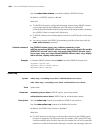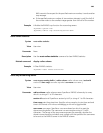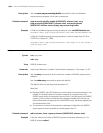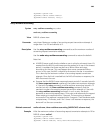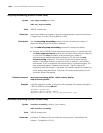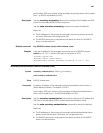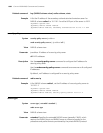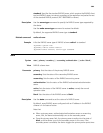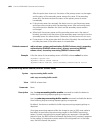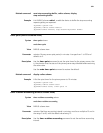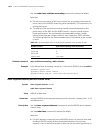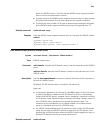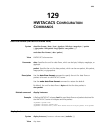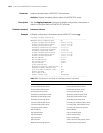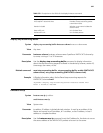
1970 CHAPTER 128: RADIUS CONFIGURATION COMMANDS
After the quiet timer times out, the status of the primary server is active again
and the status of the secondary server remains the same. If the secondary
server fails, the device restores the status of the primary server to active
immediately.
■ If the primary server has resumed, the device turns to use the primary server
and stops communicating with the secondary server. After accounting starts,
the communication between the client and the secondary server remains
unchanged.
■ When both the primary server and the secondary server are in the state of
blocked, you need to set the status of the secondary server to active to use the
secondary server for authentication. Otherwise, the switchover will not occur.
■ If one server is in the active state while the other is blocked, the switchover will
not take place even if the active server is not reachable.
Related command: radius scheme, primary authentication (RADIUS scheme view), secondary
authentication (RADIUS scheme view), primary accounting (RADIUS
scheme view), secondary accounting (RADIUS scheme view).
Example # Set the status of the secondary server in RADIUS scheme radius1 to active.
<Sysname> system-view
[Sysname] radius scheme radius1
[Sysname-radius-radius1] state secondary authentication active
stop-accounting-buffer enable (RADIUS scheme view)
Syntax stop-accounting-buffer enable
undo stop-accounting-buffer enable
View RADIUS scheme view
Parameter None
Description Use the
stop-accounting-buffer enable command to enable the device to
buffer stop-accounting requests getting no responses.
Use the
undo stop-accounting-buffer enable command to disable the device
from buffering stop-accounting requests getting no responses.
By default, the device is enabled to buffer stop-accounting requests getting no
responses.
Since stop-accounting requests affect the charge to users, a NAS must make its
best effort to send every stop-accounting request to the RADIUS accounting
servers. For each stop-accounting request getting no response in the specified
period of time, the NAS buffers and resends the packet until it receives a response
or the number of transmission retries reaches the configured limit. In the latter
case, the NAS discards the packet.



